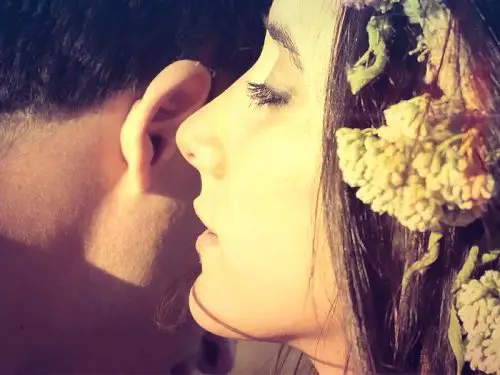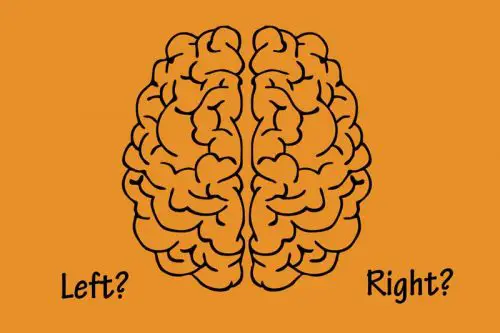Is Yellow Teeth Healthy?: When you were looking into the mirror casually, you realized that your teeth have discolored and look yellow
It concerns you because yellow teeth are said to be dirty and a sign of poor oral health.

Inspiring your journey, one story at a time. #LifeFalcon.
So now you are concerned about not only your poor oral health causing yellow teeth but also worrying about what others with think
What would their first impression be of you? Certainly not a good one.
And oh my god, you will have a “bad smile” so now you are probably thinking of ways to hide your smile in pictures and in person.
This is already depleting your confidence.
Well, let me tell you this, stop. stop overthinking the situation and do not be disheartened
I assure you; you are not the only one.
Honestly, though, it’s 2020 and people don’t really care about how your smile looks or how yellow your teeth are…unless your oral health is super bad and your breath stinks!
While there is nothing wrong with wanting whiter teeth, there may be nothing wrong with your oral health or your yellow teeth
Let me tell you why.
First, you need to be familiar with the word “Enamel”. Now some of you might have heard this word before, or maybe you haven’t but either way…
Enamel is the thin outer covering of the tooth.
So, what does enamel have anything to do with yellow teeth?
There is a science behind it, and I will tell you!
Table of Content
Is Yellow Teeth Healthy or Not?

To determine this, you need to know that enamel being the outer layer of the tooth, has a white hue to it naturally.
However, the dentin (the layer that follows the enamel) has a yellowish and greyish hue to it because of its composition.
So for some people, the yellow hue shows more through the enamel which may be thinner or more translucent. And for some, the yellow hue is not very visible because of thick or less translucent enamel, comparatively.
The thickness and translucency of the enamel solely depend on your genetics!
So, your “yellow” teeth, might not be unhealthy,
they may be completely healthy for you!
Are Yellow Teeth actually Stronger?
It is a myth that piano key colored teeth are stronger and healthier than yellow teeth.
The strongest teeth are healthy, natural, and not the color paper-white.
But if poor oral health is the main cause of your yellow teeth then stating “yellow teeth are healthy” would be highly misleading.
Because of poor oral hygiene, plague and calcified bacteria are build up on the enamel of the tooth.
This can lead to discoloration, cavities, and other oral hygiene diseases.
So not all yellow teeth are healthy, and it should be kept in mind.
Only the main cause of yellow teeth can determine if the yellowing is healthy or not so in great condition.
However, if your teeth are darker than yellow then there may be other factors causing this issue.
Let’s take a look at some of these factors:
Although genetics do play a huge role in your teeth color, there are a few other factors that do affect the color of your teeth. These factors are group into 3 categories:
Extrinsic
Caused by something that comes in contact with your teeth
Intrinsic
Caused by something inside your body or teeth
Age-Related
Caused by age-related changes to the teeth
Generally, the factors that contribute to teeth discoloration are:
Foods
There are certain fruits and vegetables, for example, apples, tomatoes, and potatoes; that can stain your teeth and cause discoloration.
Eating excessive candy or having sweet food does the same job.
Drinks
Regular consumption of coffee, tea, wine, dark-colored sodas, and fizzy drinks is a big culprit of teeth discoloration.
They contain chemicals known as “tannins”, which are famous for their blemishing properties.
Their residue sticks to the surface of your teeth and starts dissolving away the enamel.
Smoking
Smoking or chewing tobacco can stain teeth.
The tar from smoking not only causes teeth discoloration but also risks the person for different sorts of oral diseases like bleeding gums, other gum diseases, and mouth cancer.
Poor dental hygiene
It is the main cause of the yellowing of the teeth.
not regular brushing can cause plague accumulation, flossing, and rinsing enough to remove plaque and stain-producing substances which cause discoloration.
Brushing too frequently, brushing with activated charcoal, brushing with lemon juice & baking soda (the mixture of lemon juice and baking soda is acidic and it dissolves your enamel) and brushing too vigorously will also cause yellowing of the teeth.
Tooth decay also causes discoloration.
Grinding
As a habit of stress release, people develop the habit of grinding their teeth.
This habit is known as bruxism.
It damages the enamel and weakens it. Thus, causing yellow teeth.
Many people adopt the habit of grinding teeth as a stress release method. Some do it unconsciously while asleep. This habit, also known as bruxism, is damaging to the tooth enamel thus weakening it and leading to brittle and yellow teeth.
Diseases
Several diseases that affect enamel and dentin can lead to tooth discoloration.
Treatments for certain conditions can also affect tooth color.
For example, head and neck radiation and chemotherapy can cause teeth discoloration.
In addition, certain infections in pregnant mothers can lead to tooth discoloration in their babies by affecting enamel development.
Medications
Surprisingly, some medications also cause teeth discoloration.
The antibiotics tetracycline and doxycycline are known to discolor teeth when given to children whose teeth are still developing (before age 8).
Mouth rinses and washes containing chlorhexidine and cetylpyridinium chloride can also stain teeth as it erodes the enamel.
Antihistamines, antipsychotic drugs, and drugs for high blood pressure also cause teeth discoloration.
Cancer patients who undergo chemotherapy and radiation end up with discolored teeth due to the chemical reactions occurring in the body.
In addition, particular antibiotic medications like tetracycline and doxycycline can also stain teeth.
Dental materials
Some of the materials used in dentistry, especially all the silver sulfide-containing materials, can cast a gray-black color to teeth, not a yellow stain but still a discoloration.
Aging
As you age, the outer layer of enamel on your teeth wears away, revealing the natural color of dentin. This slight discoloration happens naturally.
As stated previously in the beginning of the article, genetic factors and family history also contributes to this condition.
Just as a person starts to age, the tooth starts to lay down more dentin, giving off a more yellow shade which can easily be seen through the eroding enamel.
Thus, causing more yellow-colored teeth.
Environment
Excessive fluoride either from environmental sources, like naturally high fluoride levels in the water, or from excessive fluoride use (fluoride applications, rinses, toothpaste, and fluoride supplements are taken by mouth) can cause teeth discoloration.
Trauma
Damage from a fall can disturb enamel formation in young children whose teeth are still developing.
Studies show that trauma can also cause discoloration in adult teeth
To figure out the main cause behind your tooth discoloration here is easy to figure out the list for you:
Tooth Discoloration Causes

the color of your teeth may help point out the main cause:
Yellow:
As you age, the white enamel surface of your teeth may wear down.
The yellow dentin of your teeth becomes more visible through the wearing of enamel.
Brown:
Tobacco, beverages like tea or coffee, and poor brushing habits may cause teeth to turn brown.
White:
As young teeth develop, too much fluoride can cause white spots.
This is called fluorosis and it happens when teeth encounter too much fluoride from drinking water or excess use of fluoride rinses or toothpaste.
Black:
Tooth decay may turn your teeth grayish or black.
Exposure to minerals like iron, manganese, or silver in industrial settings or from any supplements may create a black line on your teeth.
Purple:
Red wine can stain the enamel of your teeth the color of your beverage.
Most of the tooth discoloration causes are from the environment (what your intake in your diet) and your oral hygiene.
If you truly are worried about any sort of discoloration on your teeth or staining, then I’ve a few simple ways which will help you prevent tooth discoloration or at least reduce the discoloration.
Tooth Discoloration Prevention
A few simple lifestyle changes may help prevent teeth discoloration or any further intensity of the discoloration
- If you consume a lot of coffee drinkers or are a chain smoker then consider cutting back or quitting altogether.
- You should try to improve your dental hygiene by brushing, flossing, and incorporate the use of a mouthwash daily in your routine
- Visiting a dentist will surely be very helpful. so Have your teeth cleaned by a dental hygienist every 6 months.
- Incase If the color of your teeth changes without any explanation and other symptoms are also present then without wasting any time, be quick to make an appointment to see your dentist.
Tooth Discoloration Treatments
Dental hygiene and treatments
These treatments and hygiene tips will positively help you get rid of the stains and discolorations occurring on your teeth:
Brushing frequently
This is not only the most important habit you should develop but also a very important step towards ending discoloration.
It is the dental mantra!
Especially after consuming food or drink that may discolor the teeth.
So here are some of the best tooth brushing practicing tips:
- brush two to three times a day
- brush for 2 to 3 minutes at a time
- be sure to brush every surface of each tooth
- make circular motions when brushing
- avoid brushing the gums or brush them very gently
- be sure to reach the teeth at the back of the mouth
It is also recommended to not use a toothbrush with medium or firm bristles.
A toothbrush with soft bristles is recommended.
Plaque buildup can be reduced by:
- avoiding sugary or high-carb foods
- brushing regularly
- using mouthwash
These practices will also prevent the formation of plague and its deposits that are the main cause of yellow teeth.
Dental checkups
Regular dental check-ups also help in keeping oral hygiene under check, and your dentist can identify the problem as soon as it buds or before it turns into a more complex issue.
A six-month appointment to the dentist is another great way to fight back against the buildup of calculus and stains, as well as cavities and other oral-health related issues.
If you are brushing your teeth twice a day for two minutes each time, flossing every day, and visiting us every six months for a cleaning and checkup, slightly yellow teeth do not necessarily indicate that they are unhealthy.
Other dental ways
There are other ways you can whiten your teeth if you wish to do so.
The two most common ways are:
Bonding
In this process, a dentist or prosthodontist fuses material to stained areas of your teeth to change their color or shape.
Veneers
In this process, a dentist or prosthodontist puts a thin shell of material over the entire front of your tooth to change the color or shape.
Whitening toothpaste
Whitening toothpaste may help reduce the yellowing of the teeth and improve whiteness.
These products contain stronger ingredients than standard toothpaste, helping to remove tough food stains.
Whitening toothpaste does not contain bleach but may contain carbamide peroxide or hydrogen peroxide in small amounts that are not considered dangerous.
These chemicals help to lighten tooth color and get rid of the stubborn stains.
Whitening toothpaste can lighten the teeth color by one or two shades, as the studies suggest.
So, with daily toothbrushing and the use of whitening toothpaste, you can achieve your goal!
Tray-based tooth whiteners
These tray-based tooth whiteners are what is in nowadays.
Many famous stars and bloggers have been seen to advertise these on their social media platforms.
Some dentists offer tray-based tooth whitening.
Tray-based tooth whiteners can lighten the teeth by one or two shades.
This tooth whitening method involves wearing a fitted tray over the teeth. The tray contains a bleaching gel and is worn for 2 to 4 hours a day or overnight.
It is important to look for products that contain 10 percent carbamide peroxide. These are recommended as safe by the American Dental Association (ADA).
Whitening strips
These are more economical and available over the counter too.
Whitening strips deliver a thin layer of peroxide gel on plastic strips. These are shaped to fit onto the surface of the teeth.
There is a range of whitening strip products available online and instructions for them vary. Most suggest they should be applied twice a day for 30 minutes.
Strips can lighten the teeth by one or two shades.
Their results can be seen swiftly in a few days and last up to months.
Whitening rinses
Whitening rinses are another way to get rid of yellow teeth.
They contain oxygen sources such as hydrogen peroxide. These react with the compounds staining the teeth, helping to lift them.
Using a rinse twice a day for 1 minute at a time can lead to a one to two shade improvement in tooth color within 3 months.
NOTE: When used as directed, whitening agents and bleaching products do not weaken enamel. However, excessive use of them can dissolve the enamel and cause problems.
Hence, follow as it is recommended in the back of the product
Activated charcoal
This is a very old remedy and has been going on for centuries!
Toothpaste made with activated charcoal is now widely available and may help to reduce staining on the teeth.
Charcoal toothpaste should be used with caution, as they can cause staining.
The charcoal may be hard to remove from the crevices of the teeth and around restorations.
Sugary and high-carb foods
If you are looking for a long-term solution, it is wise to limit or cut sugary foods, fizzy drinks, and high-carb foods as they disturb the tooth enamel.
High citrus or acidic fruits tend to wear down the enamel and activate tooth decay and staining fast.
Calcium Intake
Calcium is like a lifeline for teeth and will prevent enamel erosion.
Its regular use will strengthen the enamel and gum lining.
Milk, dairy products, and broccoli are loaded with calcium.
Treatment options to whiten teeth can vary depending on the cause of the discoloration and may vary for everyone.
General Natural Remedies and treatment
Going to the dentist and polishing your rustic oral hygiene habits will always give you the best results but there are also natural; remedies present which may help you avoid discoloration and staining too
Here are 5 natural remedies that may help to get rid of yellow teeth at home.
Vitamin C
Vitamin C deficiency may worsen periodontitis, which is a buildup of bacteria on the teeth and gums.
This buildup contributes to discoloration.
It follows that keeping topped up on vitamin C may reduce discoloration of the teeth.
Fruit enzymes
When added to toothpaste, certain fruit enzymes may combat discoloration.
So, fruit enzymes of papaya fruit and pineapples will be of great help!
Apple cider vinegar
When apple cider vinegar is used in small quantities, it may reduce staining on the teeth and improve whiteness.
However, you need to be careful with the quantity you use.
Apple cider vinegar can damage the surface of the teeth if used too often.
So, it is best to use it in sparing quantity
Coconut oil pulling
oil pulling or swishing in the mouth with coconut oil could be an effective way to reduce plaque buildup on the teeth.
You may come across other remedies like the remedy of baking soda and hydrogen peroxide paste or the remedy of baking soda and lemon juice for whitening the teeth and reducing the discoloration.
You need to keep in mind that such remedies containing baking soda, hydrogen peroxide and lemon juice are highly dangerous for your teeth.
Their acidic and basic properties erode down the enamel and cause brittleness to your teeth.
Bleaching products can have multiple side effects, the most common being sensitivity to the cold or cause sharp pains in the gum area after bleaching.
Ending Note
Contrary to popular opinion, teeth that are as white as the paper is not in fact the norm.
Someone with extremely white teeth might have undergone numerous teeth bleaching procedures, giving them a brighter smile.
So, there you have it! Just because your smile may not be the brightest in the room, does not mean your teeth are not healthy, especially if you practice proper brushing and flossing and visit your dentist regularly.
Happy regular brushing and smiling!



















